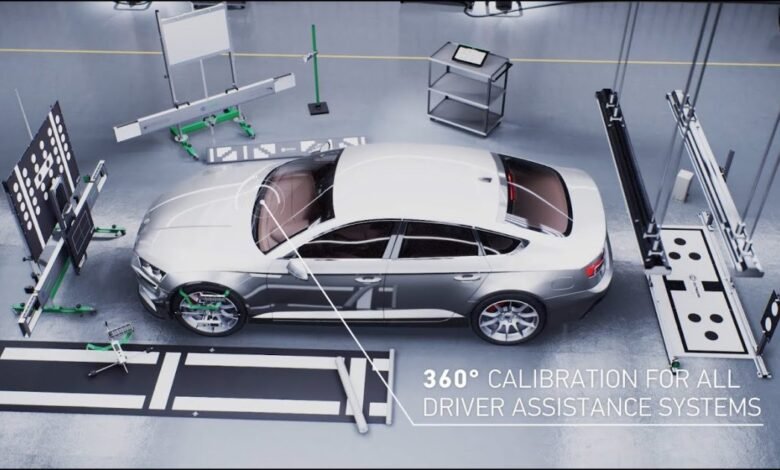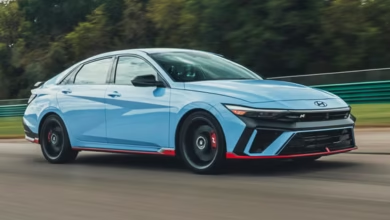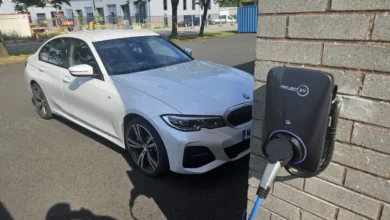ADAS Calibration: Why It Matters More Than You Think

Understanding ADAS and Its Role in Modern Driving
If you’ve bought a car in the last few years, chances are it’s packed with safety technology you might not even think about on a daily basis. Features like lane departure warnings, adaptive cruise control, automatic emergency braking, and blind spot monitoring all fall under the umbrella of ADAS — Advanced Driver Assistance Systems. These aren’t just fancy add-ons; they’re life-saving systems designed to keep drivers and passengers safer on the road.
ADAS works by relying on sensors, cameras, radar, and sometimes even LiDAR to detect and respond to potential hazards. The key to its accuracy? Precise calibration. Without calibration, your car’s “eyes” and “brain” aren’t aligned, and that can lead to serious misjudgments in real-world driving situations.
It’s easy to assume these systems are set-and-forget, but in reality, they’re delicate and can lose accuracy over time. Even something as small as replacing a windshield or hitting a pothole can throw off the calibration. That’s why understanding how and when to calibrate ADAS is critical for keeping those safety features functioning properly.
What Is ADAS Calibration?

ADAS calibration is essentially the process of fine-tuning and aligning your vehicle’s sensors and cameras so they can accurately interpret the environment. Think of it as giving your car a fresh set of glasses so it can see clearly again. This process ensures that all components — from the forward-facing camera near the rearview mirror to the radar units in the bumpers — are aimed correctly and working in harmony.
There are generally two types of calibration: static and dynamic. Static calibration is done in a controlled environment, like a workshop, where targets and patterns are used to align the systems. Dynamic calibration, on the other hand, happens on the road while the vehicle is being driven at specific speeds and under certain conditions. Some cars require one, some require both — it all depends on the make, model, and manufacturer’s guidelines.
Without calibration, you might not notice an issue right away. But in a critical moment, such as when a car swerves into your lane, an uncalibrated system could react too late — or not at all. This is why calibration isn’t optional; it’s a vital part of maintaining modern vehicles.
When Should You Get ADAS Calibration Done?
One of the most common misconceptions about ADAS calibration is that it only needs to be done after a major accident. While collision repairs do often require recalibration, there are plenty of everyday situations that can throw your sensors out of alignment.
For example, replacing or repairing your windshield almost always requires recalibration because most forward-facing cameras are mounted behind it. Even something as simple as adjusting your car’s suspension, changing the ride height, or replacing a bumper can impact ADAS accuracy.
ADAS Calibration You should also get calibration checked after wheel alignments, significant pothole impacts, or when warning lights related to ADAS appear on your dashboard. Basically, if anything affects your car’s structure, sensors, or camera positions — even slightly — it’s time for a recalibration.
The Risks of Skipping ADAS Calibration
Some drivers assume that if their car feels fine to drive, the ADAS systems must also be working fine. Unfortunately, that’s not always the case. ADAS issues often go unnoticed until they fail in a critical moment — and by then, it’s too late. ADAS Calibration
For instance, if your forward collision warning system is misaligned by just a few degrees, it could either trigger false alarms or fail to detect a real obstacle. Both situations are dangerous: the first could cause you to brake unnecessarily and risk a rear-end collision, while the second could leave you unprotected in a high-speed emergency.
Skipping calibration can also have financial consequences. In many countries, a malfunctioning ADAS can fail vehicle inspections, affect insurance claims, or even void warranties. Considering the relatively low cost of calibration compared to the potential cost of an accident, it’s a no-brainer to keep it up to date.
The ADAS Calibration Process Explained
If you’ve never had ADAS calibration done before, you might imagine it’s a quick plug-and-play fix. In reality, it’s a highly precise process that requires specialized equipment, trained technicians, and often manufacturer-specific tools and software.
First, the technician will scan your vehicle to check for any diagnostic trouble codes related to the ADAS system. Then, depending on your vehicle’s requirements, they’ll set up calibration targets, lasers, or patterns in specific positions relative to the car. This process can take time because even a few millimeters of error can throw the system off.
If your vehicle requires dynamic calibration, the technician will then drive it under certain conditions — usually on well-marked roads at specific speeds — while the system fine-tunes itself. Once complete, the technician will re-scan the car to ensure all sensors are reporting accurately. The result is a vehicle whose safety systems are fully restored to factory precision.
ADAS Calibration and the Future of Vehicle Safety
As cars get smarter, calibration is going to become even more important. Self-driving technology, for example, is essentially an advanced form of ADAS taken to its logical extreme. These systems rely on perfect sensor alignment — there’s no room for error when the car is making driving decisions without human intervention.
We’re also seeing a trend where more manufacturers require calibration even after relatively minor repairs. That means body shops, glass replacement companies, and mechanics are investing heavily in calibration equipment and training. In the near future, calibration might be as routine as an oil change for vehicles equipped with advanced safety features.
ADAS isn’t going away — in fact, it’s becoming a standard in most new vehicles. That means drivers will need to get comfortable with the idea of regular recalibrations, just like any other maintenance task. The payoff is worth it: safer roads, fewer accidents, and better peace of mind.
Final Thoughts
ADAS calibration might not sound exciting, but it’s one of the most important services you can get for a modern vehicle. It ensures your safety features are doing their job — detecting hazards, warning you in time, and even taking action to prevent collisions.
The process requires expertise, precision, and the right tools, but it’s a small price to pay compared to the potential cost of a malfunction. Whether you’re replacing a windshield, fixing a bumper, or just had a big pothole encounter, don’t skip calibration.
In the end, ADAS is like having an extra set of eyes on the road — but only if those eyes are looking in the right direction. Proper calibration makes sure they are.



